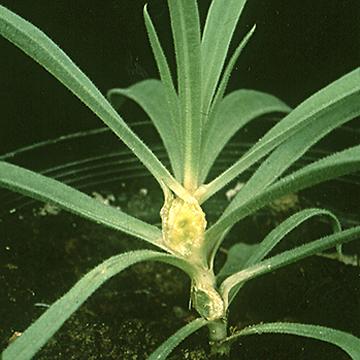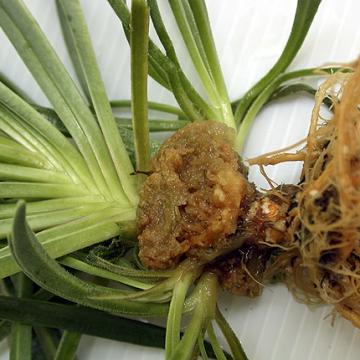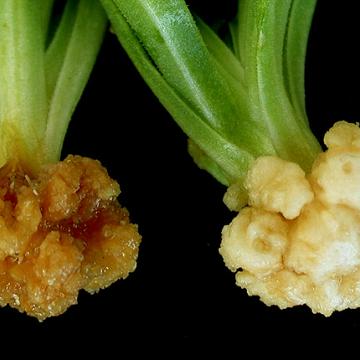DISEASE: Bacterial pustule
HOST: Soybean
Early symptoms are minute, pale green spots on young leaves. Later, small pustules form in the center of spots, best observed on underside of leaves. Spots vary in size and darken with age and lesions coalesce. Dead areas are torn away by wind.

Bacterial pustule | Soybean
DISEASE: Bacterial pustule
HOST: Soybean (Glycine max)
PATHOGEN: Xanthomonas axonopodis pv. glycines
PATHOGEN SYNONYM: Xanthomonas campestris pv. glycines
SOURCE: APS
DISEASE: Gypsophila gall
HOST: Gypsophila (Baby's breath)
Gall on gypsophila stem.
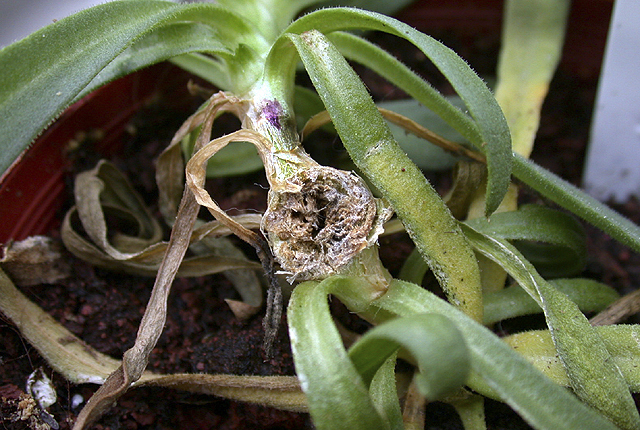
Gypsophila gall | Gypsophila (Baby's breath)
DISEASE: Gypsophila gall
HOST: Gypsophila (Baby's breath) (Gypsophila elegans)
PATHOGEN: Pantoea agglomerans pv. agglomerans
SOURCE: S. Manulis
DISEASE: Gypsophila gall
HOST: Gypsophila (Baby's breath)
Gall 1 month after inoculation of stem.
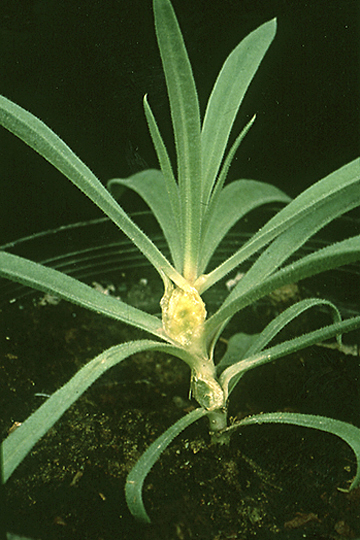
Gypsophila gall | Gypsophila (Baby's breath)
DISEASE: Gypsophila gall
HOST: Gypsophila (Baby's breath) (Gypsophila elegans)
PATHOGEN: Pantoea agglomerans pv. agglomerans
SOURCE: S. Manulis
DISEASE: Gypsophila gall
HOST: Gypsophila (Baby's breath)
Brown gall on crown of gypsophila.
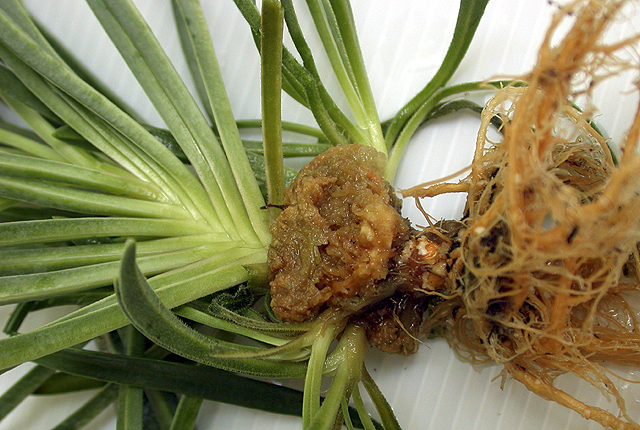
Gypsophila gall | Gypsophila (Baby's breath)
DISEASE: Gypsophila gall
HOST: Gypsophila (Baby's breath) (Gypsophila elegans)
PATHOGEN: Pantoea agglomerans pv. agglomerans
SOURCE: S. Manulis
DISEASE: Gypsophila gall
HOST: Gypsophila (Baby's breath)
Galls (left) caused by Pantoea agglomerans pv. agglomerans tend to be brownish, and those (right) caused by P. agglomerans pv. betae are white.
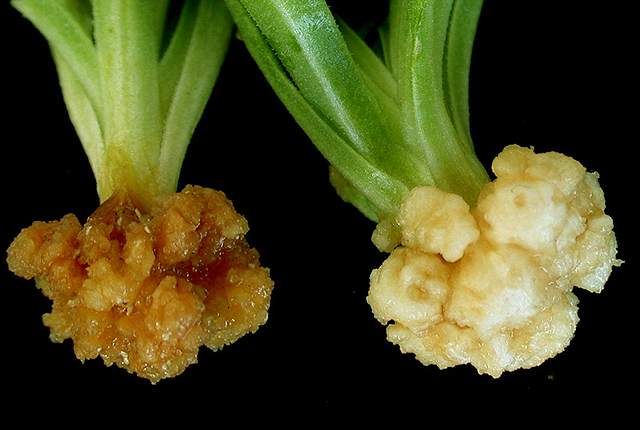
Gypsophila gall | Gypsophila (Baby's breath)
DISEASE: Gypsophila gall
HOST: Gypsophila (Baby's breath) (Gypsophila elegans)
PATHOGEN: Pantoea agglomerans pv. agglomerans
SOURCE: S. Manulis
DISEASE: Syringae seedling blight and leaf spot
HOST: Pepper
Blight lesions (on transplants) usually begin as water-soaked spots that later turn brown to black. Lesions are on cotyledons and first true leaves.

Syringae seedling blight and leaf spot | Pepper
DISEASE: Syringae seedling blight and leaf spot
HOST: Pepper (Capsicum annuum)
PATHOGEN: Pseudomonas syringae pv. syringae
SOURCE: APS




